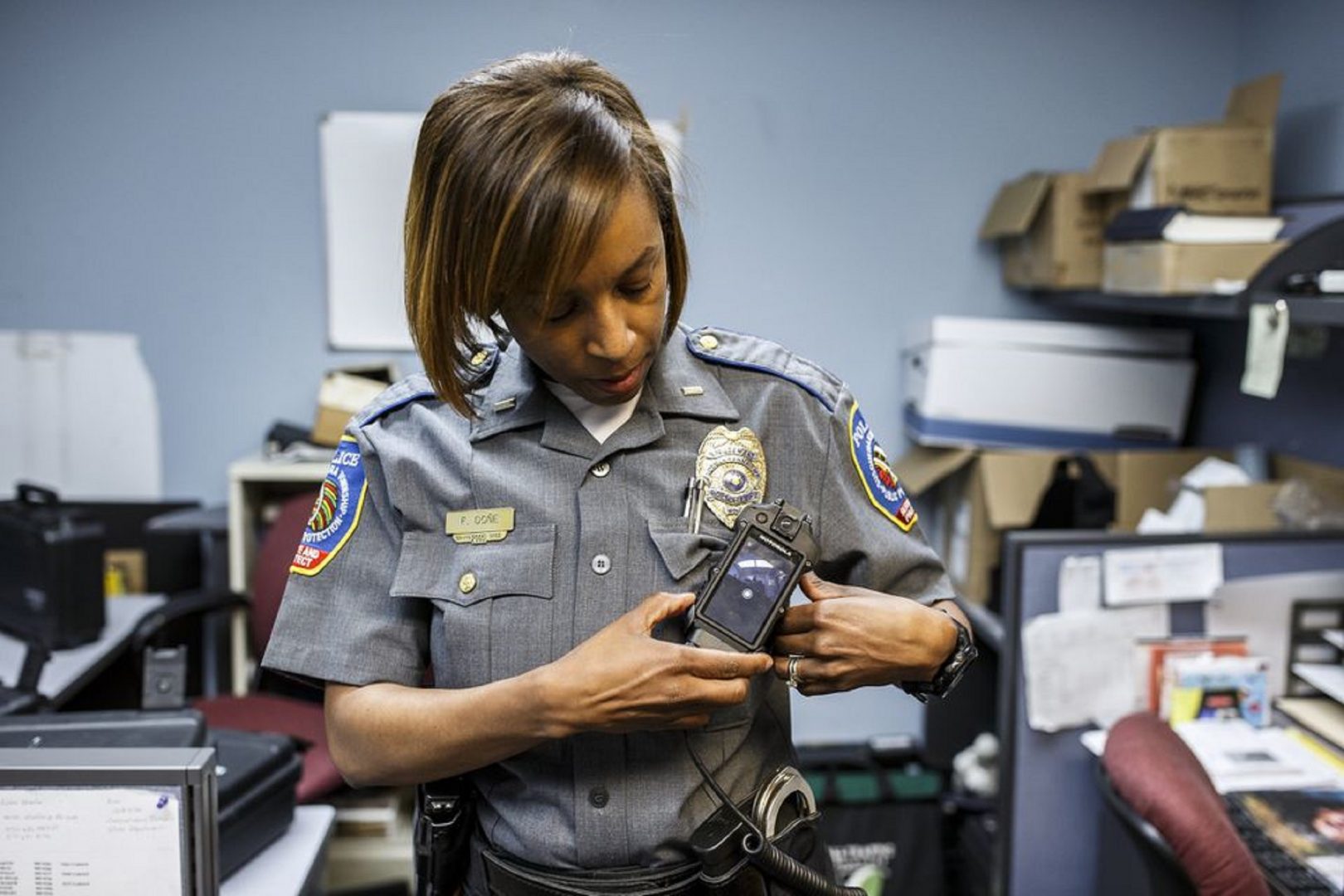
Susquehanna Township police Lt. Francia Done shows a Motorola body camera. May 15, 2019.
Dan Gleiter / PennLive

Susquehanna Township police Lt. Francia Done shows a Motorola body camera. May 15, 2019.
Dan Gleiter / PennLive

Dan Gleiter / PennLive
Susquehanna Township police Lt. Francia Done shows a Motorola body camera. May 15, 2019.
(Harrisburg) — If you’re under the impression that most police agencies in Pennsylvania have body cameras as a part of their arsenal, you’d be wrong.
Police in Pennsylvania are lagging years behind their counterparts across the country in adopting use of body cameras, in large part because they were worried they’d run afoul of the state’s wiretapping law.
Elsewhere in the U.S., body cameras have been in use for nearly a decade. A 2013 Department of Justice study found that one-third of local police departments had cameras by that time. Another study found that 95 percent of the nation’s largest departments were using body cameras, or planning to adopt them, by 2015.
The 2014 police shooting of Michael Brown in Ferguson, Missouri, and the protests that followed accelerated those efforts, as cameras were seen as a way to increase police accountability and build public trust.
So two years ago, when Gov. Tom Wolf signed a law that enabled police to use the cameras on the job without risking charges for illegal wiretapping or a lawsuit, Pennsylvania was already well behind the curve.
It hasn’t yet caught up.
PennLive surveyed 22 police agencies that serve central Pennsylvania, including state police, and found only three have moved beyond pilot programs to put body cameras into regular use.
Most departments that don’t have cameras say they would like to begin using them but they face several obstacles, not the least of which is cost. They also are moving deliberately to draft policies governing the use of cameras, storage of the resulting video and issues of who can access it.
Around the state, Pittsburgh and Philadelphia both began planning for the use of body cameras before the 2017 law change, and now have cameras in place. Philadelphia just completed its policy last year, while Pittsburgh had outfitted all officers to start 2019, TribLive reported.
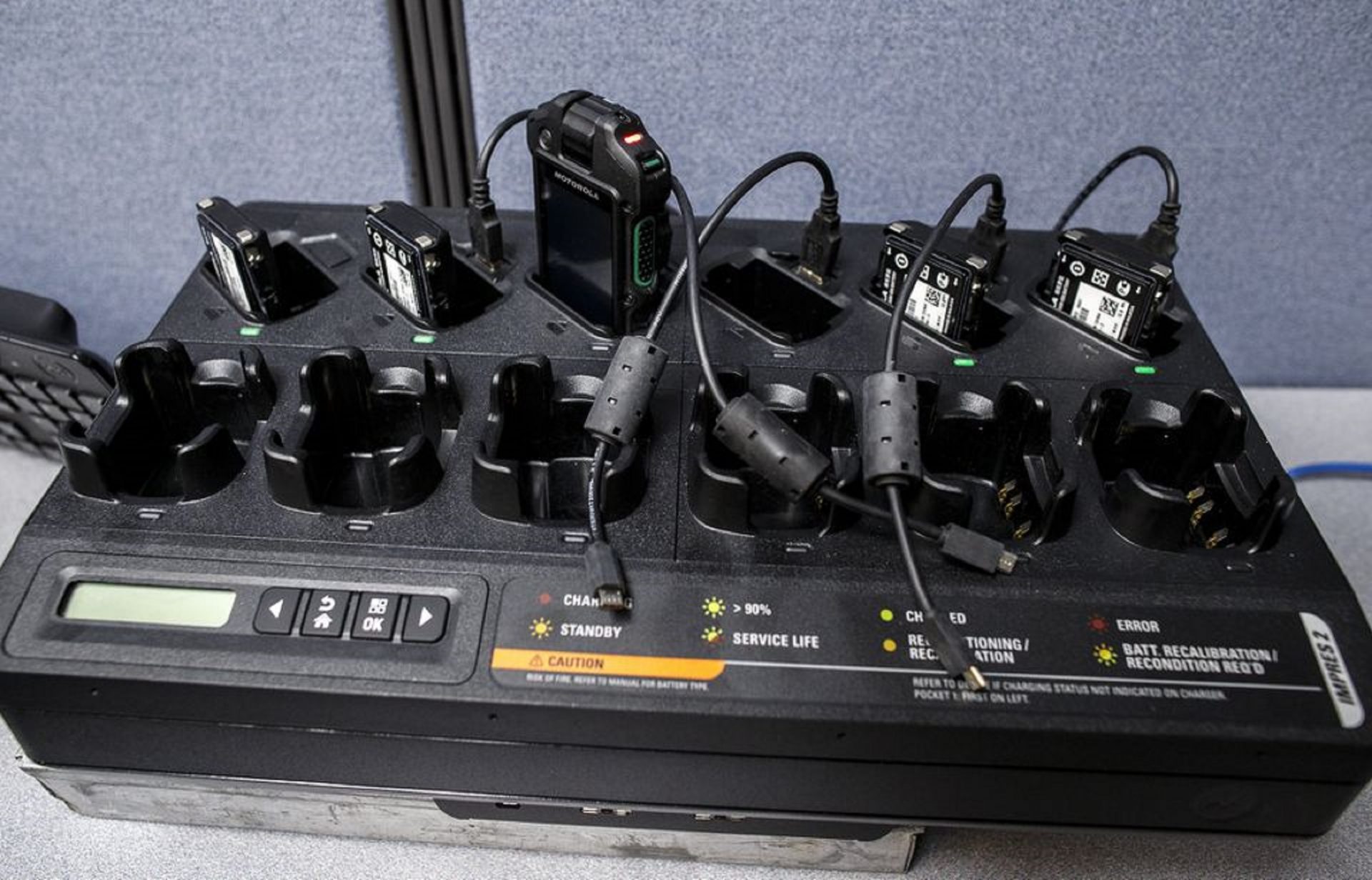
Dan Gleiter / PennLive
A docking station charges the body cameras. Susquehanna Township police show a Motorola body camera. May 15, 2019.
York instituted a body camera program for the department that was completed just before the law was changed, YDR reported, and Lancaster started its program last year, according to LancasterOnline.
Scranton, Erie and Harrisburg are all still in the process of acquiring cameras but closing in on the finish line, according to local media reports.
Central Pennsylvania police agencies say they’re eager to put cameras, typically worn on the front of a police officer’s uniform where they can capture interactions between police officers and the public, into use. In the event of a problem, footage can be reviewed to assess the actions of both parties.
“Majority of police officers, when we go on scene, you see cameras recording you from the moment you roll up to any interaction you have with a person,” Harrisburg Deputy Police Chief Deric Moody said. “And that can be doctored, that can be manipulated to be shown in a light to spin the story. [A body camera] levels that playing field. You have a video but we also have a video.”
Added Darrell Rieder, director of public safety for Swatara Township: “I don’t fear this in the least bit. I think that our officers do a great job and have done so for many years. If anything. I see this as an opportunity to show people how professional our police officers are, how dangerous their jobs are, and what a good job they do in handling the situations they’re put in. I look forward to them having that extra layer of protection, to show what they’ve done in a certain situation.”
Pilot program proves valuable
One department that has made progress is Harrisburg. Police Deputy Chief Deric Moody said the department’s 90 to 100 uniformed patrol officers are expected to be the first to get body cameras. He hoped to have them operational by the end of the summer.
One of the biggest concerns was figuring out the technical aspects of bringing cameras to the department, Moody said. The department has done two rounds of pilot programs with various cameras over the past two years. One morning this spring, he spent three or four hours with a vendor who was demonstrating his product before it went into a pilot program.
“In our minds, this has been a partnership. Our IT department has really driven a lot of the technical aspects of it,” Moody said. “We know from a policing standpoint what will make a good fit.”
On the same day in 2017 that Gov. Wolf signed Act 22, he also announced a $52,000 federal grant to allow state police to start a pilot program. The pilot provided body cameras for a small group of troopers during the second half of 2018.
Brent Miller, state police spokesman, said the program provided valuable feedback.
“Users liked having the body cameras,” Miller said. “Troopers generally had no issues following the policy as outlined. There was a learning curve with activating the cameras, which was anticipated and consistent with previous rollouts of new equipment and technology.”
Since the pilot program, Miller said the department is looking to make some “incremental changes” to its interim policy to make it more comprehensive, based off feedback they got from troopers, supervisors and outside stakeholders.
Miller said state police support expanding the use of body cameras, but doesn’t have a timetable for when troopers will get them.
PSP spokesman Ryan Tarkowski added that there are financial hurdles to bringing cameras to the statewide department, and they are exploring funding options.
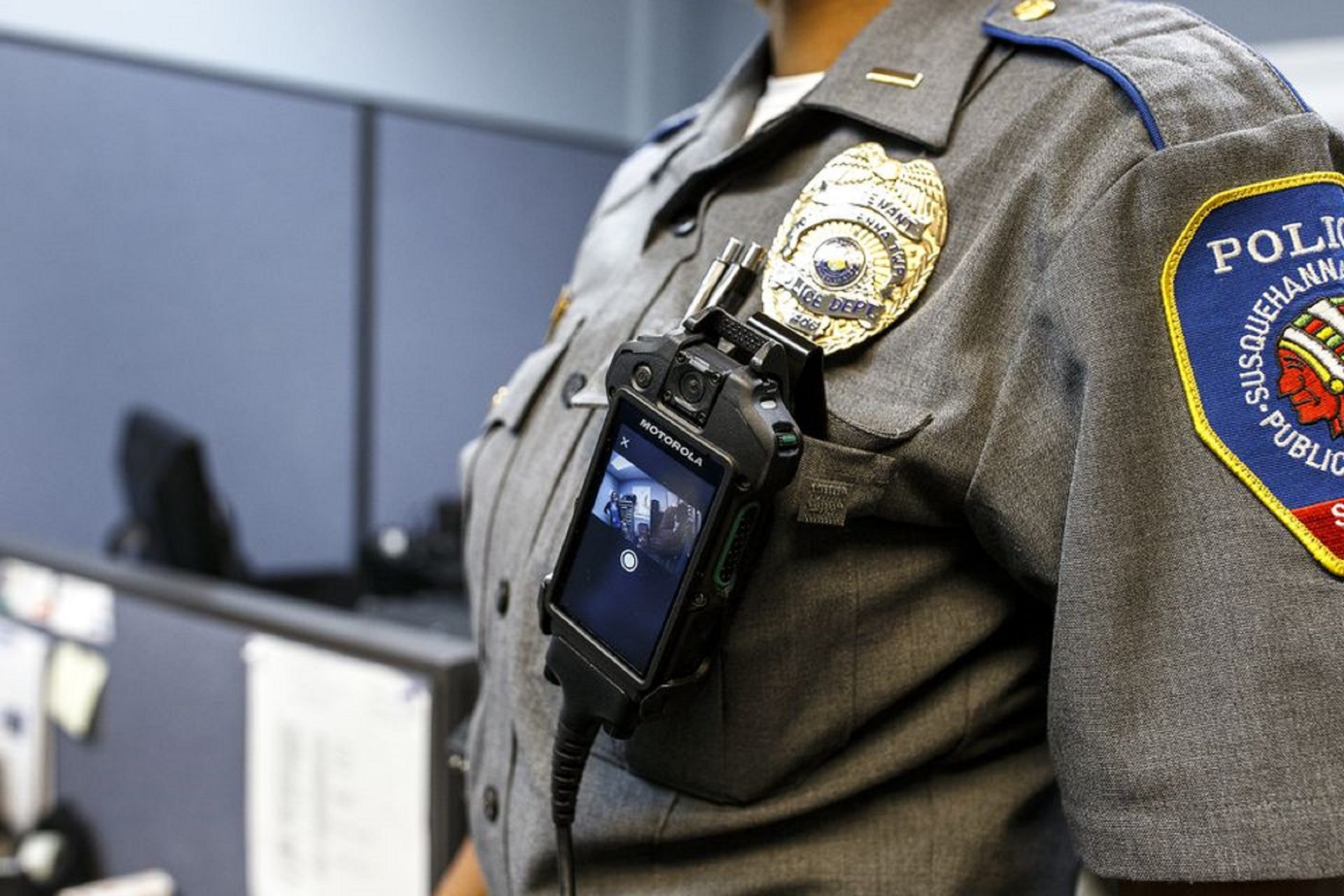
Dan Gleiter / PennLive
Susquehanna Township police Lt. Francia Done shows a Motorola body camera. May 15, 2019.
Cost is a barrier for some departments
University of Pittsburgh professor David Harris said he isn’t surprised by how slowly these programs have been developed, considering the costs.
“[Departments] need to have a very frank public discussion. You need to say if we do this, this is the commitment we would have to make financially,” Harris said.
Departments have a variety of body camera options from which to choose, ranging from familiar names such as Motorola to law enforcement-focused companies such as Watchguard.
They also come with a wide range of price tags, depending on the type of storage that departments want, the camera’s features and upgrades that technological advances will require.
According to information compiled by the Pennsylvania House Appropriations Committee, individual cameras can cost anywhere from $99 to $1000 per camera, but the bulk of the costs go toward storage systems.
“It’s hard to put a number on it because each vendor has different ongoing cost requirements,” Moody said. Simple things such as replacement batteries have to be factored in, he said, so it’s hard to give exact numbers.
On the high end, companies offer a lot of bells and whistles, Moody said.
But if they don’t also offer built-in replacements and upgrades of equipment, a department risks spending a lot of money on a system that could quickly become obsolete.
And a cheaper system might prove to be more costly in the long term. The cost of storage, equipment repair or upgrades can add up quickly.
“We factor all of that in,” Moody said. “All of [the cameras the department has tested] have been within budget. It’s not always as simple as ‘I’ll take the cheaper one.’”
Departments also have to consider how many officers they must equip with cameras. For Harrisburg, it’s close to 100 to start. For Swatara Township, it’s more like 20.
Federal and state grants are available to help pay for the cameras, and in some cases will help pay for up to half a department’s costs.
Larger departments, such as the state police and Harrisburg police, have some support in place to handle the logistics of a body camera system.
That’s not always the case for smaller departments, and those departments in Dauphin and Cumberland counties have moved more slowly toward getting cameras.
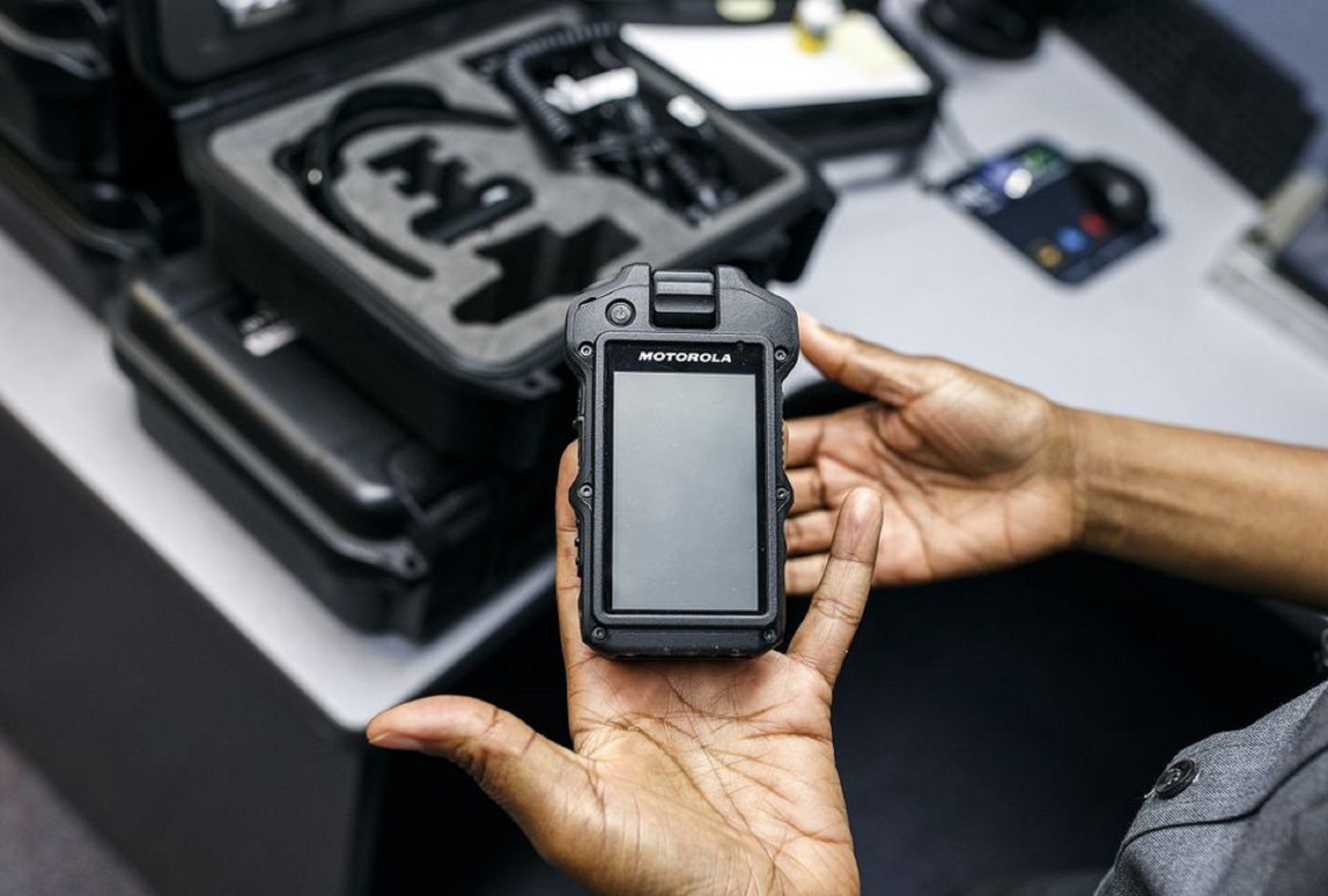
Dan Gleiter / PennLive
Susquehanna Township police show a Motorola body camera. May 15, 2019.
In Swatara Township, part of why its process has been so lengthy is figuring out the funding for an immense amount of storage.
In 2017, the department upgraded its server in anticipation of getting body cameras, Rieder said. He said the old server was at the end of its life, so the timing worked out. But that doesn’t mean they aren’t looking at options to save costs elsewhere.
“We’re talking about taxpayers’ money. No municipality wants to raise taxes, so you have to look for available monies out there, and grants aren’t something that happens overnight,” Reider said. “It’s a complicated process.”
One option is to allow the same company that supplies the cameras to provide storage of the video those cameras produce. But keeping that video footage in a cloud system, which is common practice, could cost more because of the need for added online security.
The department likely will get a minimum of 20 cameras, Reider said. He’s looking to some federal grants to help pay for them, and is anticipating getting cameras in the next two years.
“We try to take advantage of grant money whenever possible to try to ease the burden on the taxpayers while still trying to move our department into the future,” Reider said.
Money is the reason that Hampden Township has decided to hold off on equipping its officers with body cameras.
“The outright purchase isn’t typically the problem, but file storage is,” Chief Steve Junkin said. “Records retention laws and statute of limitations, coupled with how long it takes for some things to go to court, adds to the overall amount of video storage we’d need.
“That cost could be several thousand a year,” he said. “Now take all of that video and add in the time it takes to duplicate it for court, when most of that is already captured on the [in car cameras], and we see an increase in labor costs but a duplication of information.”
For Junkin, the small number of use-of-force complaints against officers isn’t enough to justify the cost of cameras yet. The department will continue to evaluate the need each year, he said.
Derry Township Police Department also has no timetable in mind for getting cameras but has begun the process of trying to find funding, according to Chief Garth Warner. “If a department doesn’t jump on [purchasing body cameras] right away — some of your smaller departments that don’t have very big budgets – it’s not that they don’t want to do it, it’s that they can’t,” he said.
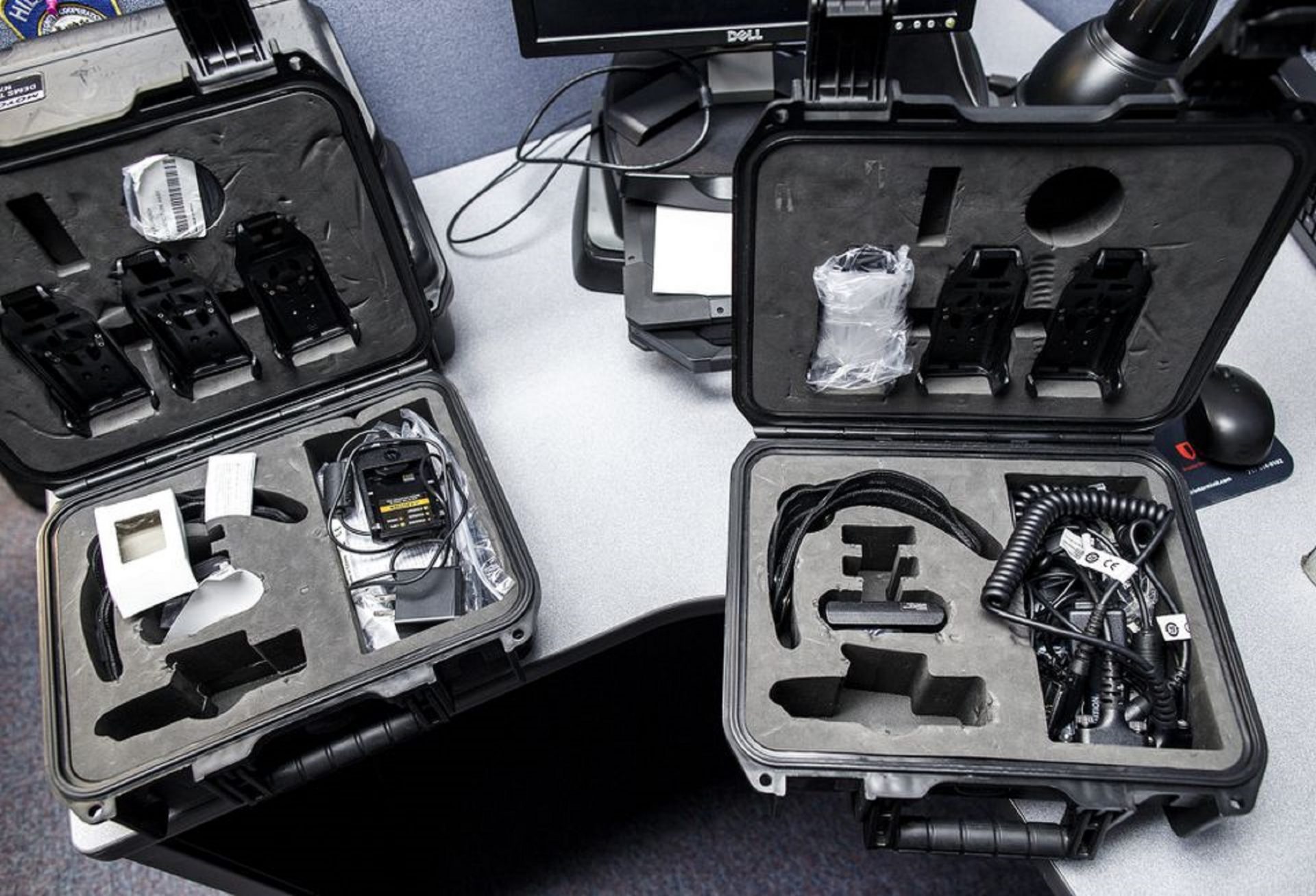
Dan Gleiter / PennLive
Cases hold parts and accessories for body cameras. Susquehanna Township police show a Motorola body camera. May 15, 2019.
What video gets stored, and who can see it?
Aside from financing and storage, departments have to iron out policies governing the use of cameras, the storage of the video and questions about who can get access to the footage.
Sgt. Brian Karcesky with Swatara Township police explained why the storage policies alone can be complicated.
“Basically all that material is considered classified, but it’s all something that needs to be regulated,” he said. Information recorded has to be retained for at least 60 days, he said, in the event it has investigative use or there is request filed for public release.
Footage used in active cases doesn’t have to be released, but if it is, it has to be “cleaned” of confidential personal information. For example, that means video of computer screens, personal information broadcast over the police radio or images of Social Security numbers all would have be redacted before the video is made public.
The revisions to the Wiretap Act allows departments to make that determination. If a department denies a request for public release, the decision can be appealed to the district attorney’s office. The law change did remove body camera footage from being requested under the standard Right To Know laws.
With public access to the footage a key in the appeal of these programs to the public, the state’s Victim Advocate Jennifer Storm said the financial hurdles some areas face may impede justice for victims in areas that can’t afford cameras.
“The only drawback that we see is justice isn’t universal. When there is evidence in a larger county that is well-resourced, that could mean it could tip the scales of justice for a survivor,” Storm said. “Certainly we want all of our criminal justice tools to be available for everyone.”
Harrisburg is one of the few area departments with a mostly complete body cam policy. It put together an interim policy for its pilot program, which governed everything from when the cameras should be used to storage issues and more.
That policy includes requiring officers to turn on the cameras during the following:
To round out its interim policy, Moody said cameras should be turned on in “any and all instances where [something] is likely to occur.”
“If you’re not sure, then record,” Moody said.
Swatara Township and many of the other area departments are still writing policies. Primary considerations include deciding when cameras should be turned on, when footage is marked to be kept, how it’s stored, who looks at the video footage and how much is reviewed over time.
Police unions were major players in getting the law changed to allow body cams. Now they’re fighting on behalf of their officers regarding how cameras and the footage they capture will be used.
Joe Regan, the recording secretary with the local branch of the Fraternal Order of Police, said the unions are focusing on a few priorities.
“Cameras can’t run 24/7, Regan said. “That’s very impractical, unfair to the officer.”
Unions also would like officers to be able to see the footage before writing their reports, in the event that they’re involved in something that requires extra examination.
“That’s part of it,” Regan said. “You need to be able to review the footage.”
He called it a best practice, since it ensures the most accurate report.
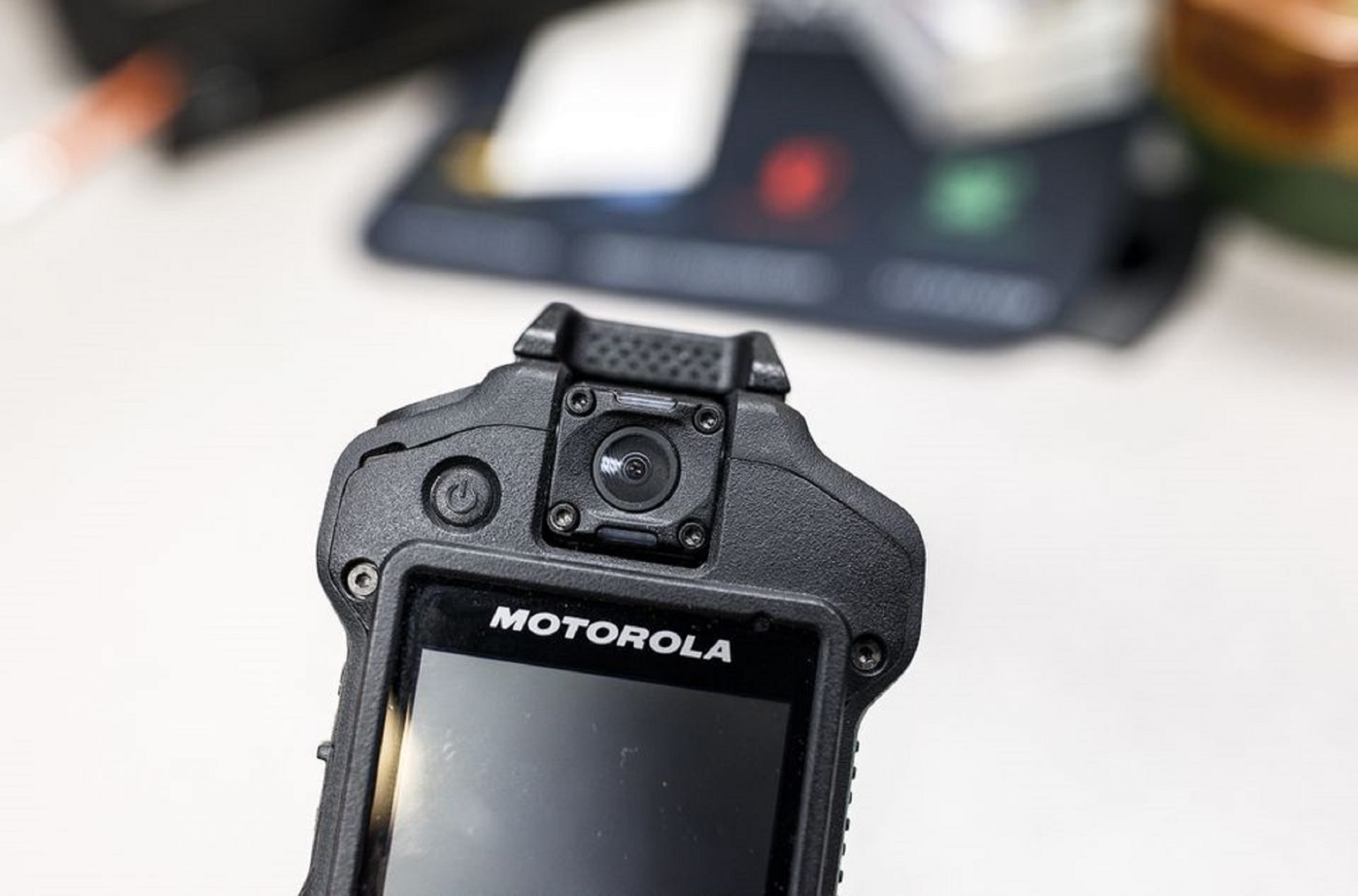
Dan Gleiter / PennLive
Susquehanna Township police show a Motorola body camera. May 15, 2019.
Not just Ferguson pressure
Another person who is not surprised by the slow adoption of body cams by police in Pennsylvania is Duquesne Law professor John Rago, who was part of the group that helped write Act 22 and clear the way for the use of the cameras by police.
Pretty much everyone — the Federal Order of Police, the media, politicians — agreed that cameras would benefit both police officers and the communities they served. But, he said, it still took three years to get the law passed.
He knew that police have a lot of questions to answer as they moved to acquire body cams. But in the long run, Rago said he believes the benefits are worth the effort.
“Cameras enable law enforcement to have better confession evidence, departments to see fewer civil-rights claims, and more reliable information to go to a jury,” he said.
Rago, based in Allegheny County, said he can think of several instances already when police in his region might have faced excessive force complaints were it not for evidence from body camera.
“Every time you have an event that is not captured on film, the jury is going to be more and more skeptical of law enforcement,” Rago said.
Police see body cams as having benefits that go well beyond protecting officers from false use-of-force accusations.
“From an operational standpoint, I think what body cameras are going to suggest or show is that at least 95 percent of the time, 95 percent of the officers are doing what they should be doing,” Moody said. “There was a time when I would have said 100 percent, but that day has come and gone. That train has already left. We are aware of officers in the profession that are doing things that they shouldn’t be doing.”
Moody said Harrisburg’s body camera policy includes an audit system to review the work of officers at random. Similarly, Swatara Township’s Rieder and Derry Township’s Warner see potential for using footage of successes and mistakes for training purposes.
The video becomes especially useful because, in many instances, members of the public are already recording interactions between police and the public, Warner said.
“I think most law enforcement agencies and leaders realize that we have to be able to capture the entire incident as much as possible,” Warner said. “So when you have those cellphone videos that come out and it’s 10 seconds of an incident, when it’s the most critical part, we have to be able to show what happened before that and what happened afterward.”
Harris, the University of Pittsburgh professor, said cameras provide more than just evidence, but whether it strengthens the relationship with the community depends on how a department chooses to use them.
“They don’t necessarily get the public confidence buy-in that they thought they would if they don’t want to release the footage,” Harris said. “The departments who do will, but it takes a lot of guts to make a decision like that. When you do it, you’re way ahead.”
The one thing all chiefs interviewed wanted to emphasize was that while it will be a big step in holding everyone accountable, the cameras aren’t everything.
“I will caution that it is a piece of evidence, but it needs to be taken in context,” Rieder said. “It only shows a narrow focus of view. I would caution anybody in any given situation to understand the context of what you’re viewing and take that as one piece and not the whole story.”
PennLive and The Patriot-News are partners with PA Post.
The days of journalism’s one-way street of simply producing stories for the public have long been over. Now, it’s time to find better ways to interact with you and ensure we meet your high standards of what a credible media organization should be.